 American history of fashion is rather special. People in the US usually consider the clothing of first settlers as its beginning. That’s why the exhibition of the Kent State University Museum shows vintage garments of the mid-1700s as the oldest pieces in the collection. In this article, we’ll demonstrate the close-ups of various dresses and other clothing articles of the 18th – the beginning of the 19th century. Also, you’ll find out some curious facts about American and European fashion.
American history of fashion is rather special. People in the US usually consider the clothing of first settlers as its beginning. That’s why the exhibition of the Kent State University Museum shows vintage garments of the mid-1700s as the oldest pieces in the collection. In this article, we’ll demonstrate the close-ups of various dresses and other clothing articles of the 18th – the beginning of the 19th century. Also, you’ll find out some curious facts about American and European fashion.
The Kent State University Museum shows 250 years of fashion with its 25 vintage pieces. Let’s look at the exhibits and learn more about them.
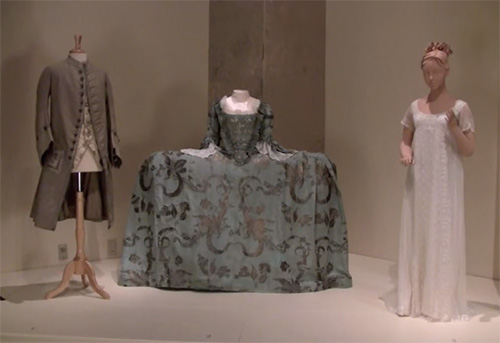
Here is one of the oldest items – a very formal English mantua that was restored by a senior fashion design major.
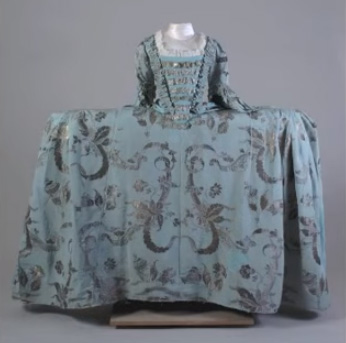
This fabric for the dress was made about 1745. The dress in its configuration when the museum got it, looked like it was sort of 1770 remade for fancy dress. So, Christina Hill, senior fashion design major, took it apart and they had 57 pieces that fit together like a jigsaw puzzle. Then, they were able to take it back to its earliest configuration – about 1750.
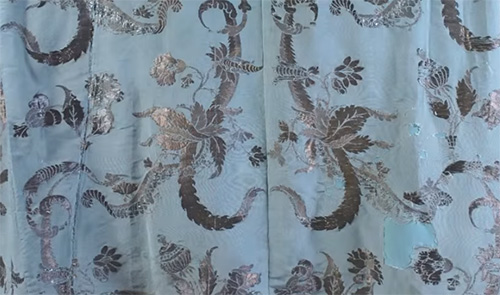
The pannier is the side hoops that keep the dress extended so wide at the hip – about 56 inches across. When you went through a door, you either went sideways or the doors were wide enough to accommodate you or if your pannier was so contrived, they could collapse so that you could go through the door.
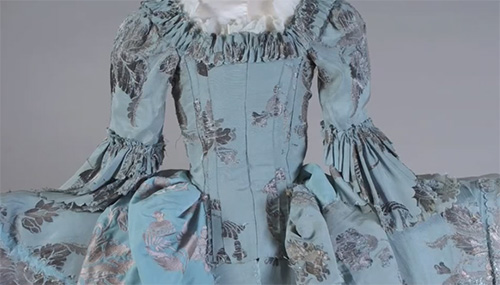
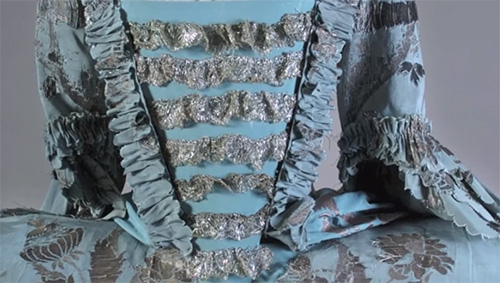
Camlet is an interesting fabric. It's made out of silk and wool and some kind of hair – the kind of hair varies, but it is so densely woven that it's actually nearly waterproof. So the English gentlemen who lived in the countryside could ride through the brambles in their camlet coats and brush them off and it wouldn't damage them very much.
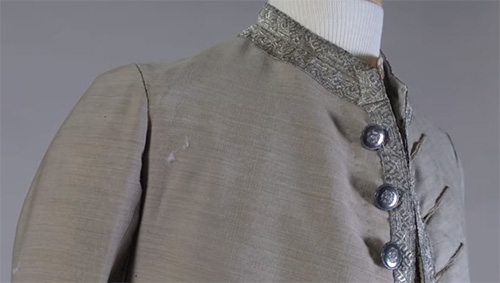
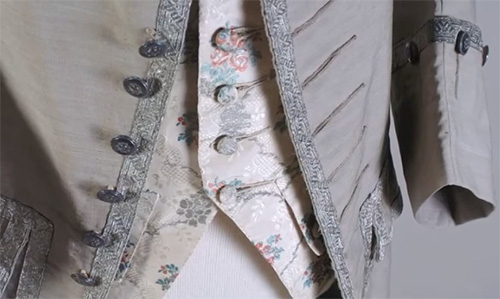
It was in considerable opposition to the French fashion of silks and velvets. The English gentleman could go from the country to the city in his camlet coat.
Next to the white dress. It is the first example of what we call a “round gown”.
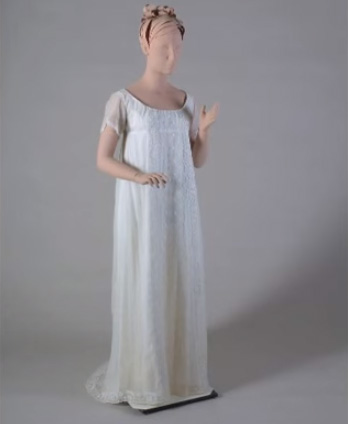
For almost a hundred years, the fashion was for an open robe and petticoat. In other words, an expansive skirt and then an overdress that was open down the middle, and the middle filled in with a triangular piece called a “stomacher”. And you can see that in the blue and silver dress that we talked about earlier.
The round gown was the first garment to close the front in the 18th century. And, of course, without that split down the front, it was a round gown.
This particular dress is made of a very, very sheer cotton called “mull”. Usually, mull was woven in India of very, very fine threads and then exported.
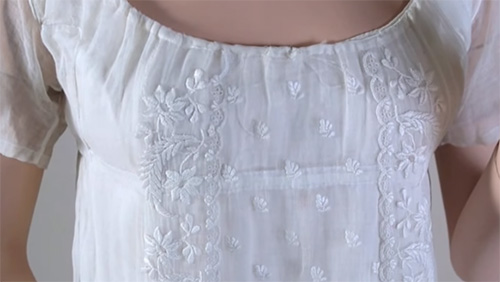
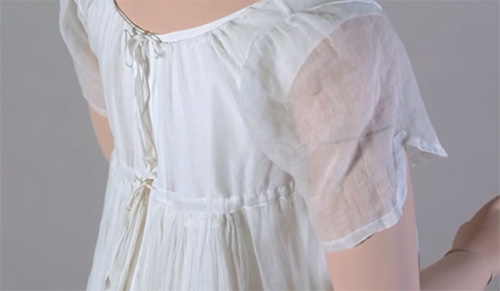
Sometimes, it was embroidered in India – it's very difficult to know exactly where the textile was embroidered. But they were embroidered to the shape that would be cut and finished, like this particular gown.
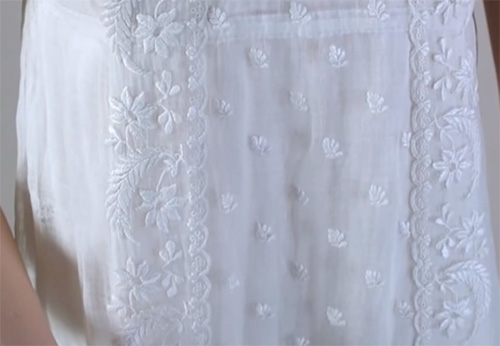
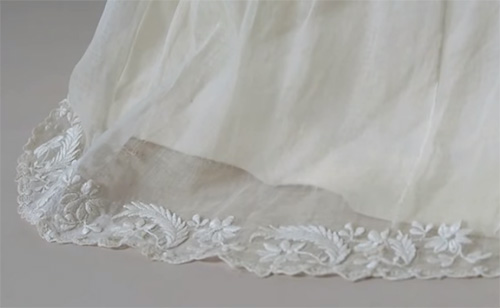
The next gown – the white dress – is from about 1829. It's decorated with Ayrshire needlework which is a combination of embroidery and drawn&pull threadwork.
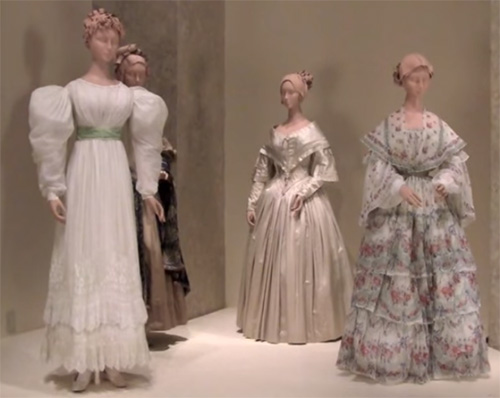
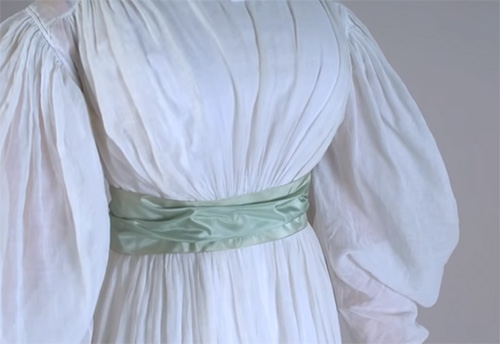
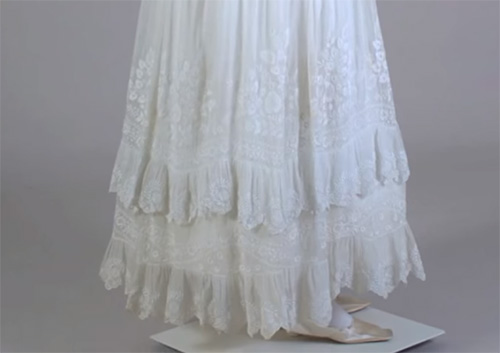
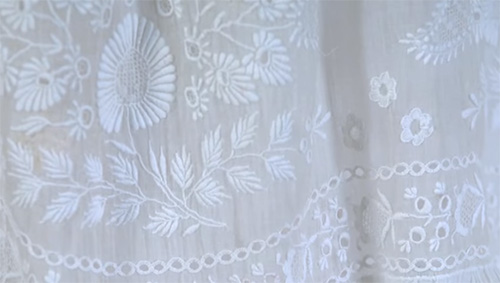
But the most dramatic thing about this dress are its sleeves. In contrast to the round gown that you saw earlier, which is so narrow and so slender and which sought to replicate antique statuary, this dress now is the beginning of the Romantic movement in fashion. And you have the widening of the sleeve and the widening of the skirt – that width at the hem is accented not only by the decoration but by the ruffles as well. This is the largest extent of the leg-of-mutton sleeve until you get to the 1890s when it reappears.
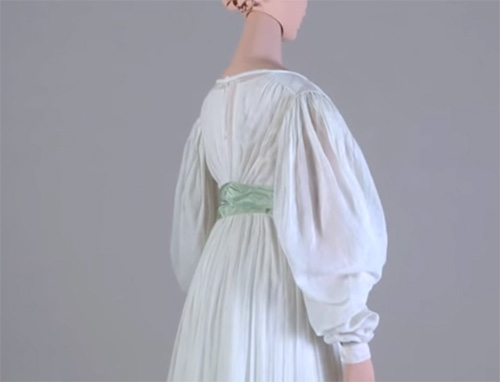
Behind the white dress, is a bronze dress, a kind of beigy-brown, bronzy silk from the 1830s. That was a very popular color in the 1830s. Up to this time, you're only seeing colors with natural dyes, meaning dyes extracted from vegetable and animal matter.
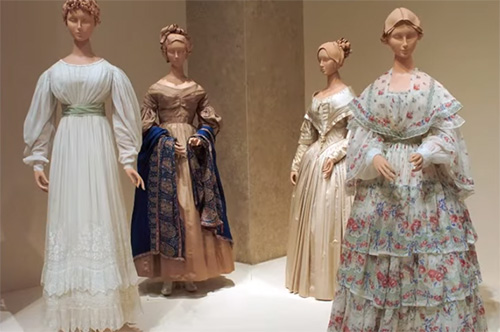
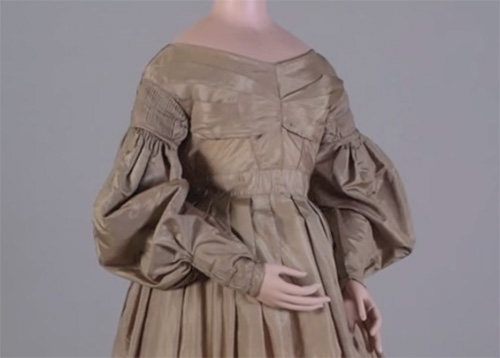
The shawl was a very popular accessory. It was brought to England, of course, from the Far East, from India, from Kashmir. And it was worn in the 18th century, but people really believed that it was popularized by Empress Josephine in France and that Napoleon brought some of those shawls to her from some of his campaigns. They were extremely expensive, very luxurious. And, of course, they became quite a fashion.
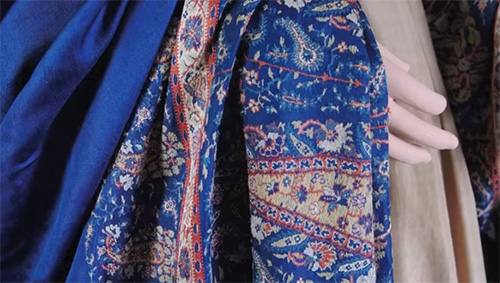
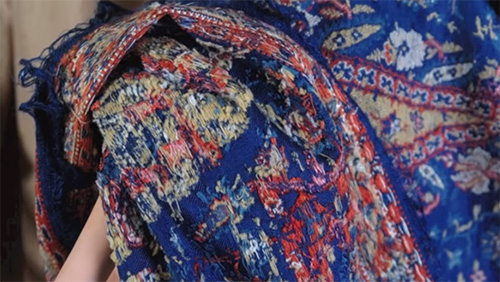
In the 1840s, you'll notice that suddenly the sleeve is long and slender, the fullness of the skirt is at the waistline, and the skirt begins to widen even more than it had in the decades before.
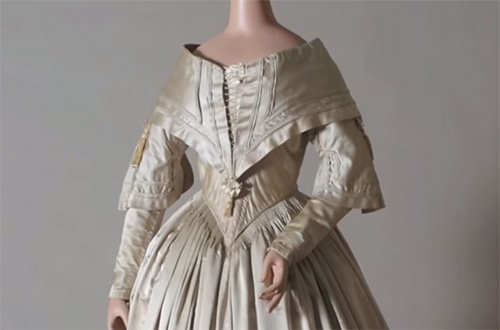

And by the time you get to the 1850s, which is the little flounce dress, you can see how wide and bell-shaped these skirts have become.
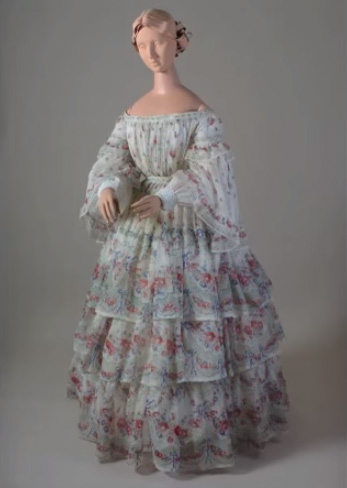
It's a very sheer cotton and it was worn by a woman who lived in Mississippi. If to talk about all the layers that go under these garments, next to the skin you have a shift, over the shift you have a corset, over the corset you have sometimes drawers and petticoats – and many petticoats in order to keep your skirt as full as possible.
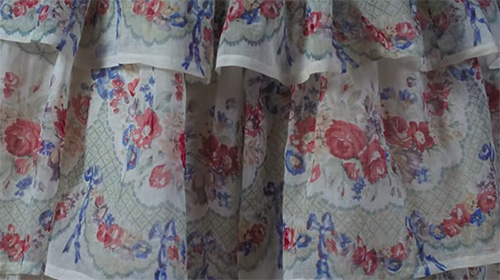
In this case, the dress requires undersleeves as well, and they only reach to above the elbow. But nonetheless, it's another layer.
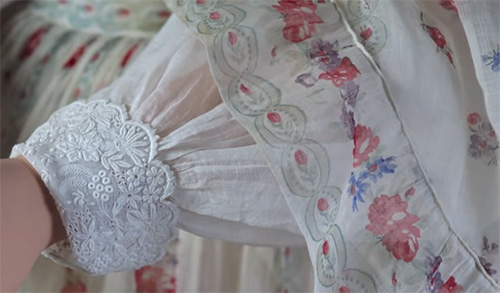
All of the petticoats that were worn under the dresses in the 1840s and 50s were pretty dangerous for a lot of women. If a spark flew from the fireplace while you were cooking and caught your petticoats on fire, you were in pretty serious shape.
In 1856, when the Thompson cage crinoline was patented, people began to realize what a relief it was to wear these concentric hoops of steel, held together in a particular configuration by tapes, and they then fastened around the waist, so that instead of multiple petticoats that were heavy because they had to be starched in order to stand out, you had a single petticoat, sometimes with a light-weight overskirt, to hold out the dresses.
Here you see a dress from the 1860s and it's supported by a cage crinoline.
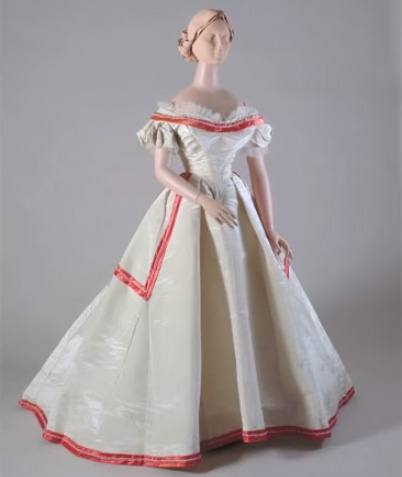
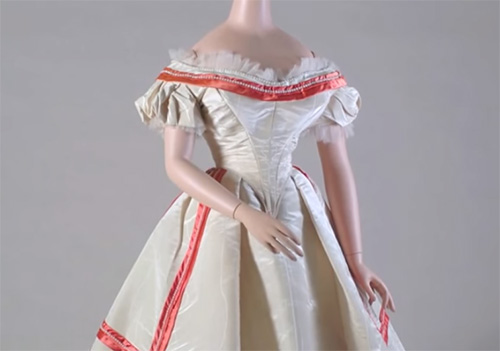
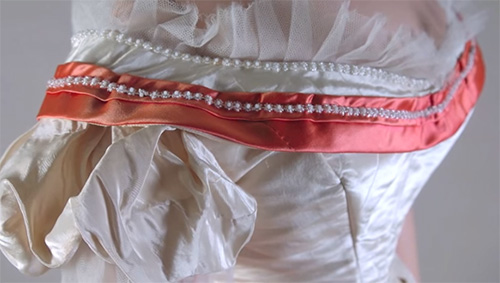
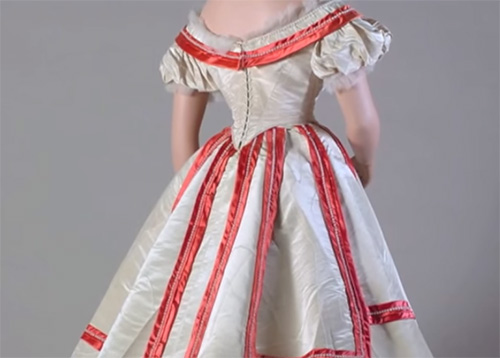
By the late 1860s, really by about 1865 when this dress was probably worn, the shape of the fashionable silhouette had changed. It was no longer the bell shape of the 1850s, but it was more elliptical, the fullness was pushed from the front to the back, and you can just begin to see the formation of a bustle.
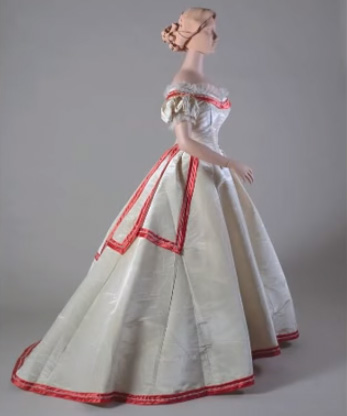
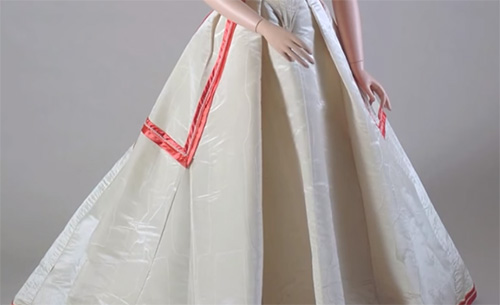
Cage crinoline allowed this to happen very readily because you could change the configuration of hoops by the placement of the tapes that held them together.
Around the 19th century, there were very carefully understood reasons for wearing certain kinds of garments at certain times. Really, it's a long tradition of what's appropriate to wear at court in the presence of certain dignitaries, what's appropriate to wear at home, and, in fact, there are tongue-in-cheek cartoons about women changing clothes every hour of the day in order to wear something that they consider to be appropriate.
Here you have two dresses from the 1870s and the 1880s, the bustle period.
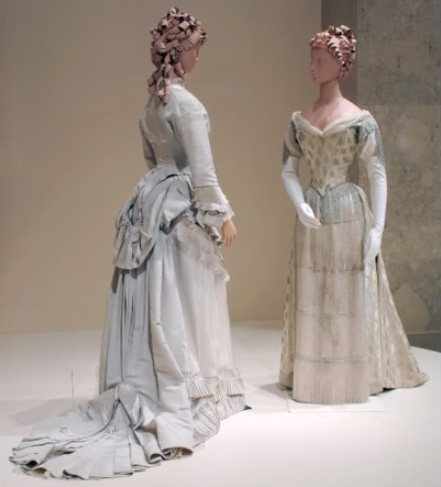
This gray silk faille dress is a visiting dress. There were elaborate rituals for calling during the late Victorian era and you wanted to be very certain that you were dressed appropriately.
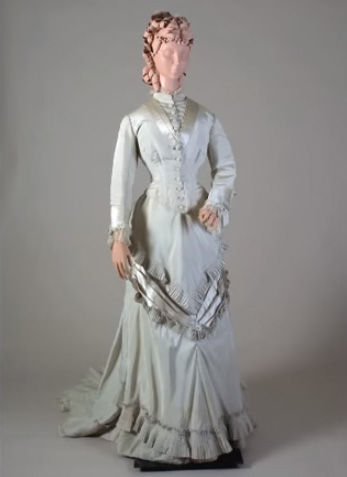
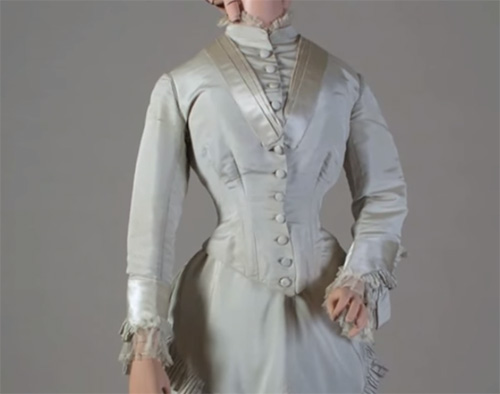
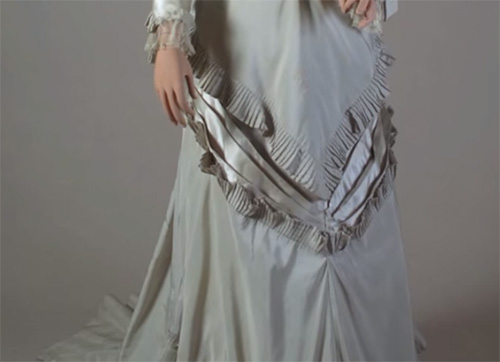
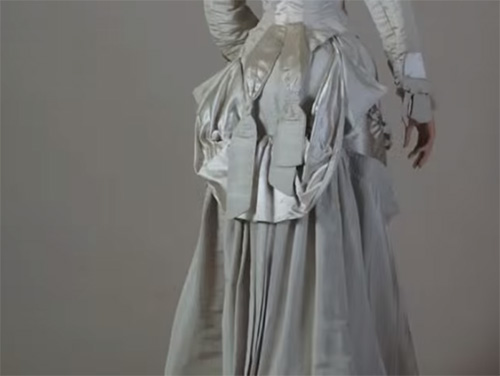
The dress is just fancy enough and because it has a train, it may, in fact, have been appropriate to wear at a reception as well.
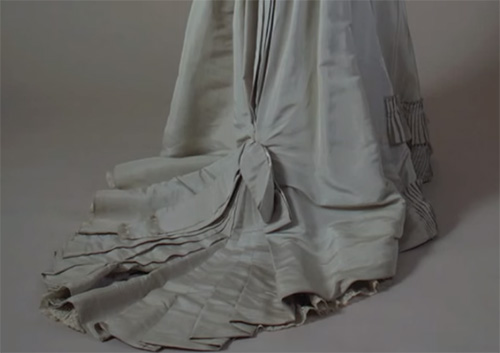
The dress next to it is definitely a ballgown because it has a low neck and very, very short sleeves. Generally, the lower the neckline and the shorter the sleeves, the more formal the evening occasion.
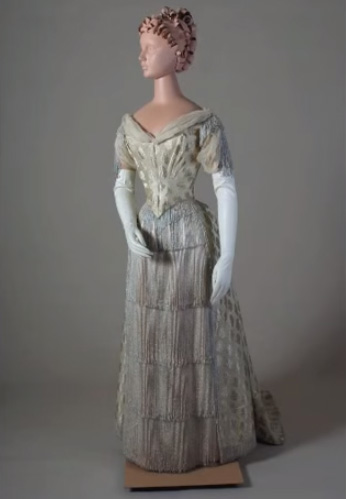
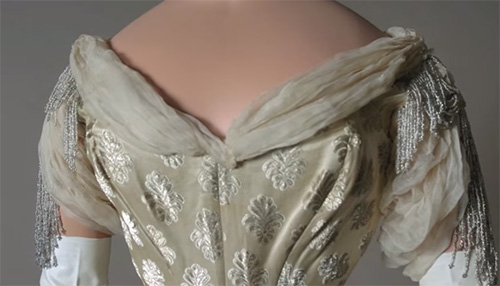
The silver brocading on the white satin is really wonderful and, of course, the front of the dress is covered with silver bead fringe – you can only imagine how it would wiggle and shake as she walked.
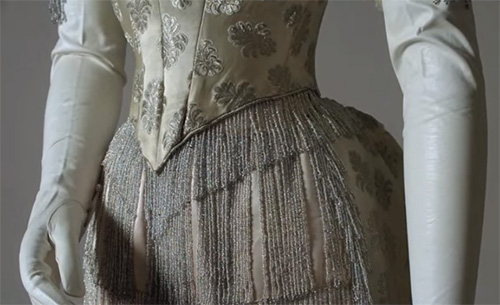
In the 20 years between 1890-1910, considerable changes took place in the feminine silhouette and, of course, in the corsetry that created it.
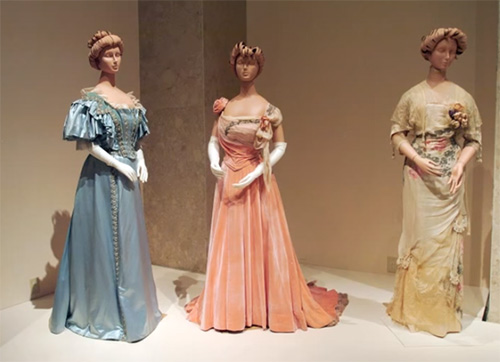
Here you see an evening dress from the middle of the 1890s – about 1895. With the evening version of the leg-of-mutton sleeve, the Robin's Egg blue dress decorated in silver.
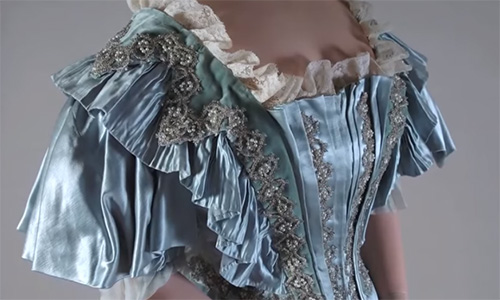
Another dress is from about 1900. This is a lovely coral velvet, but the shape of this dress is an S-curve and the corset forces the bosom into what's called the “powder pigeon” or the “mono-bosom”, and you sort of jut-out in front and jut-out behind.
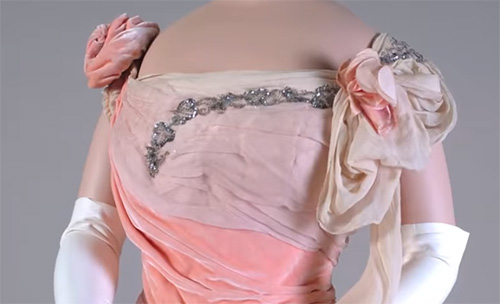

And the third dress in this group. Look how narrow it is, how straight it is. This was a return to the neoclassicism.
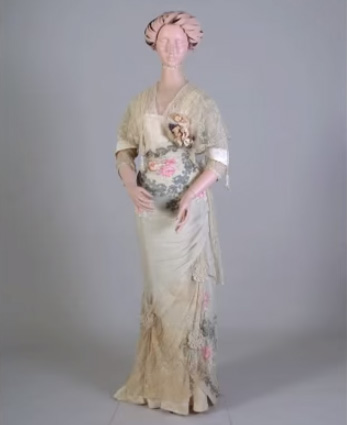
If you remember the round gown that we’ve seen earlier, the round gown was the first of the neo-classic period. And here you have the beginning of the 20th century. Fashion’s looking back a hundred years and straightening the silhouette once again.
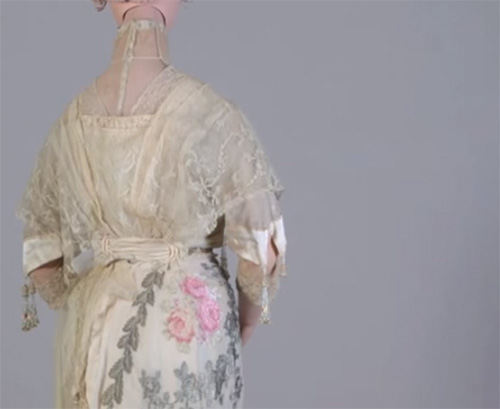
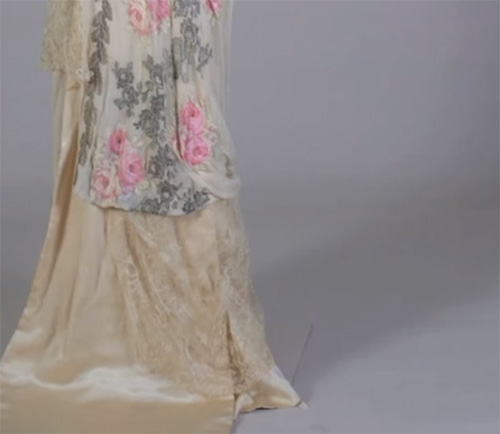
The pink and silver evening dress dates from about 1915-1918.
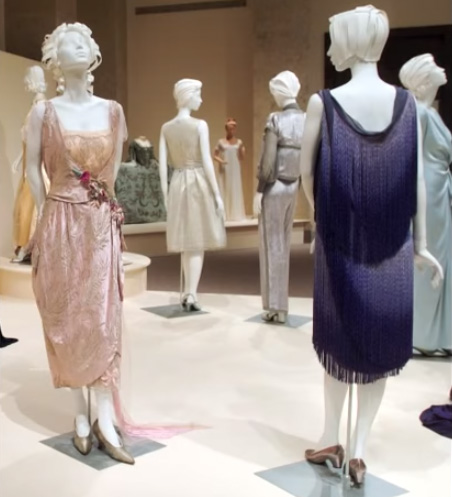

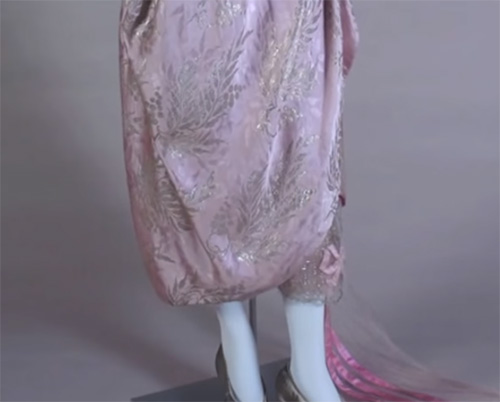
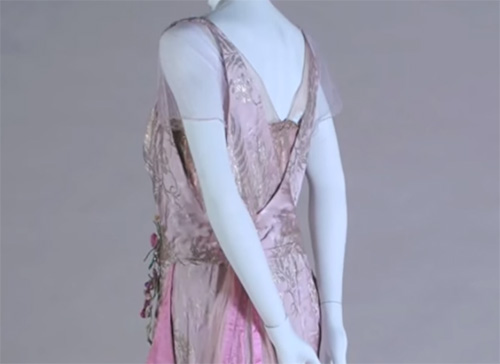
Notice that for the first time, you're seeing the ladies ankles. This is an enormous change as well. Part of it was brought about by the fact that women were beginning to work, to need more mobility because of the athletic things they did, because of the changes in lifestyle after the Victorian and Edwardian periods.
It also reflects some of the changes brought about by World War I, when women were working outside the home, taking jobs that were normally held by men. And they needed more mobility than previous fashion had allowed.
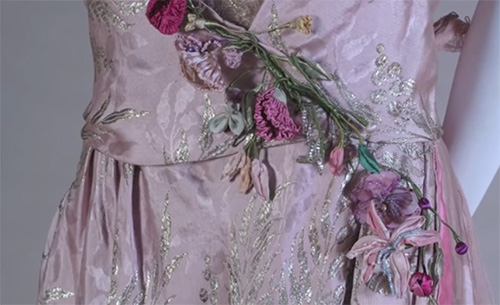
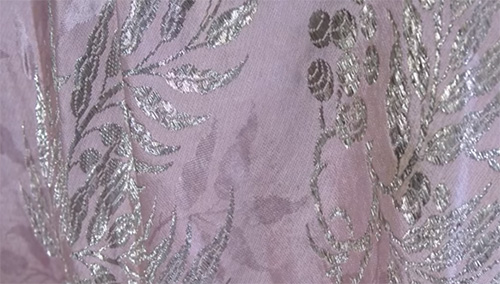
This dress is by Lucile, Lady Duff Gordon. Perhaps, she's most notorious for forcing her husband off the Titanic and into a lifeboat. He was one of the few men that did not drown.
Next to the Lucile, is a marvelous dress by Coco Chanel. This is so interesting because of the long fringes that are attached to a piece of blue chiffon that simply wraps around the body and forms the dress on top of a very plain silk undergarment.

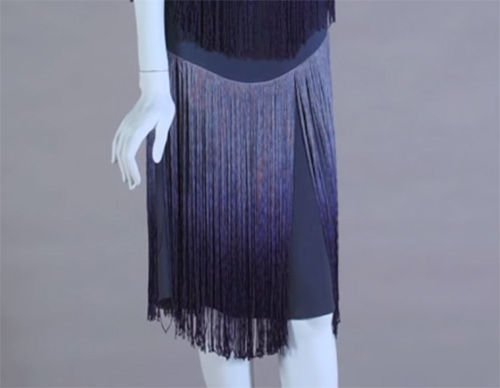
A model of this dress was worn by the actress Marion Morehouse and was pictured in Vogue in 1926. This is a gift from Helen Borowitz collection.
(c)


